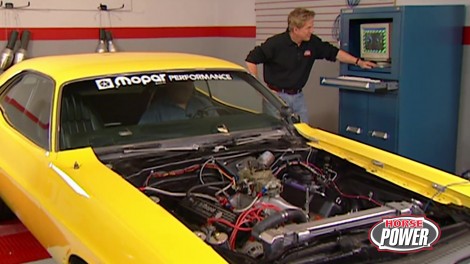
CRATE ENGINE CHALLENGE, CART RACING
Today on HorsePower, we examine three classic muscle cars, each equipped with a distinct big block crate engine from the big three automakers. We dive into the intricate details of these powerhouse engines, starting with the 71 Dodge Challenger featuring a 500 cubic inch Mopar Performance engine, before moving to the 64 Ford Fairlane armed with a 460 cubic inch Cobra Jet, and concluding with the 70 Chevelle Malibu, loaded with a 502 cubic inch Ram Jet from GM Performance Parts. Each run on the dyno gives us exciting insights into the power and potential of these iconic builds.
Season 5
Episode 13
Hosts: Joe Elmore, Chuck Hanson
First Air Date: September 23, 2022
Duration: 19 minutes 12 seconds




























